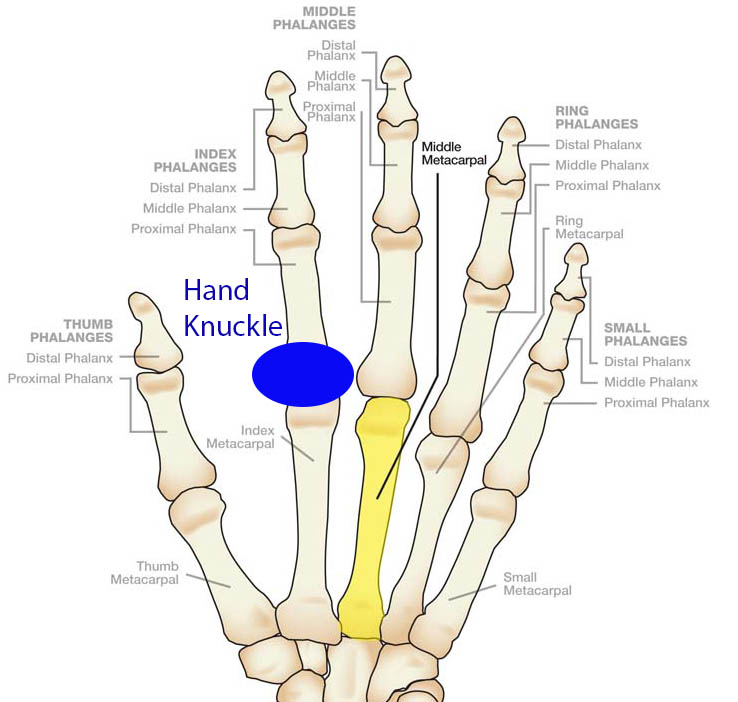Action and Reaction via Newton's Third Law
It is now necessary to realize that action and reaction are always equal.
Thus, when you exert your finger-tip against the key downwards, there is an equal reaction (or recoil) at the other end of the finger, upwards at the hand knuckle [1]
This invisible reaction or recoil upwards at the knuckle must be countered at the hand knuckle by supplying a sufficiently stable basis (or mass foundation) for the action of the finger. In short, the exerted finger needs a basis (mass) at the knuckle-joint, equal to the force to be exerted against the key.
This invisible reaction or recoil upwards at the knuckle must be countered at the hand knuckle by supplying a sufficiently stable basis (or mass foundation) for the action of the finger. In short, the exerted finger needs a basis (mass) at the knuckle-joint, equal to the force to be exerted against the key.
For every action, there is an equal and opposite reaction
A force is a push or a pull that acts upon an object as a result of its interaction with another object.
Forces result from interactions and some forces result from contact interactions [2] .
According to Newton, whenever objects A and B interact with each other, they exert forces upon each other.
When you sit in your chair, your body exerts a downward force on the chair and the chair exerts an upward force on your body.
There are two forces resulting from this interaction, a force on the chair and a force on your body.
These two forces are called action and reaction forces and are the subject of Newton's third law of motion.
Likewise, when you play with your finger downwards, the fulcrum at the hand knuckle must remain firm as shown in Figure 4.1 below.

This necessity of a firm basis for every action was instinctively felt even by some of the older pedagogues.
Unfortunately, they were quite vague and unclear as to what it meant physiologically and how this reaction should be interpreted from within the context of classical physics. Hence arose their mistaken idea of fixation. Fixation of the joints during the moment of touch is a mistake, leading to a paralyzing stiffening of the whole limb. Instead of fixation, one should used the term "firm" to indicate a basis or foundation against the reaction upwards.
During the moment of touch (the fulcrums must remain firm), and it did not occur to these writers of the past ( from 1880 to 1920) that this
stable condition can only be achieved by supplying an invisible stress from the next portion of the limb behind the joint or hinge in question. The hand knuckle is the fulcrum for the finger and the wrist is the fulcrum for the hand.
[1]hand knuckle (metacarpophalangeal) :The hand knuckle consists of the first phalanx and metacarpal bone (The proximal phalanx and Index Metacarpal to be more precise)
[2]contact interactions: normal, frictional, tensional, and applied forces are examples of contact forces.